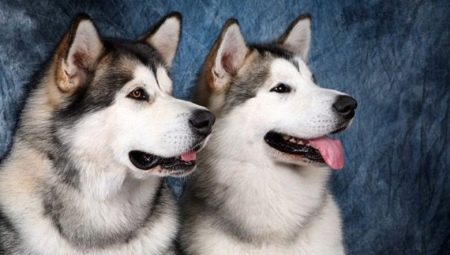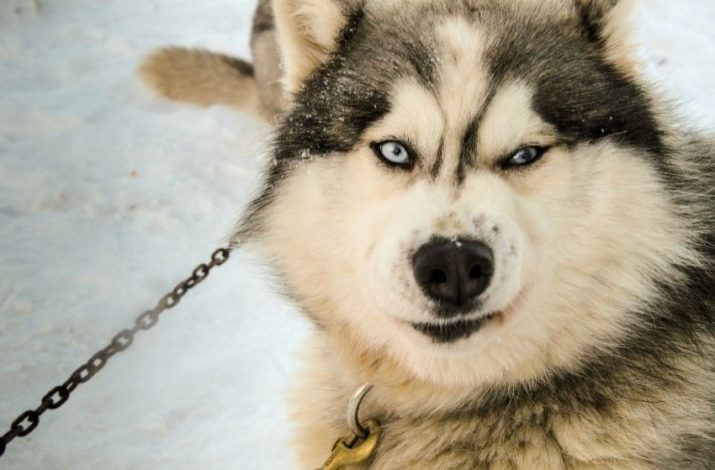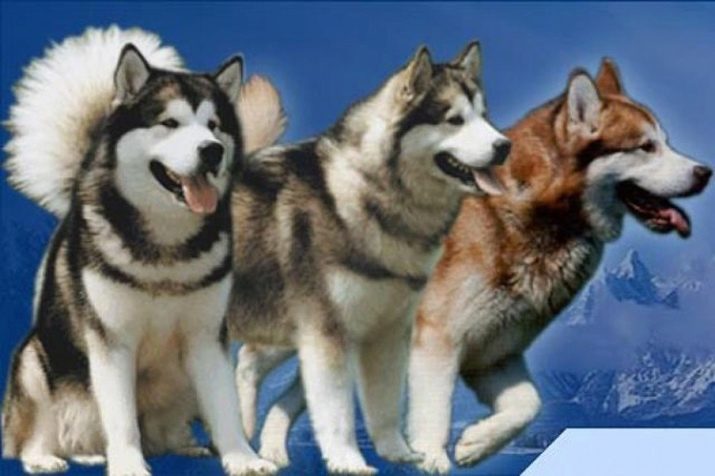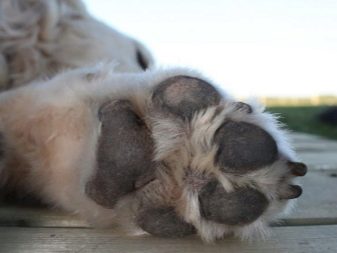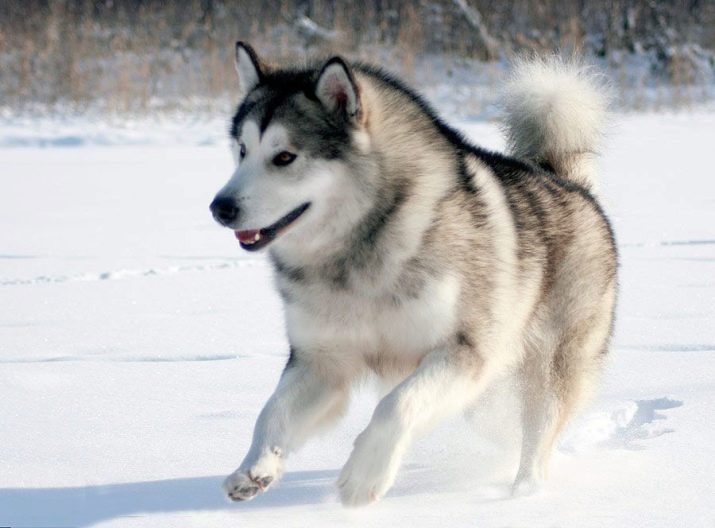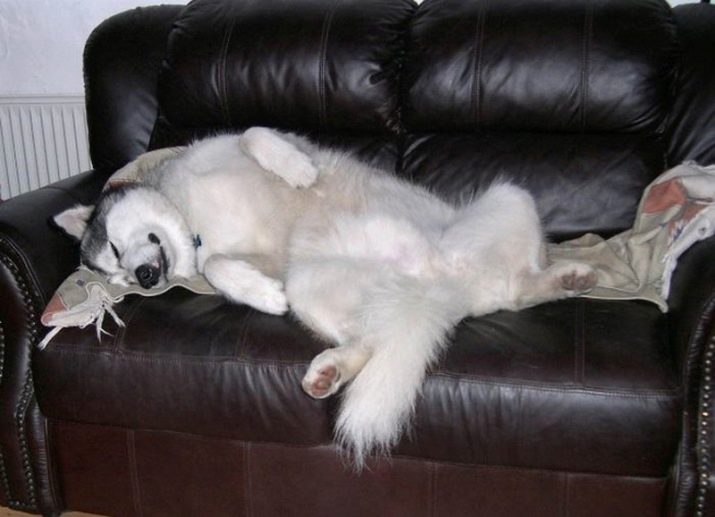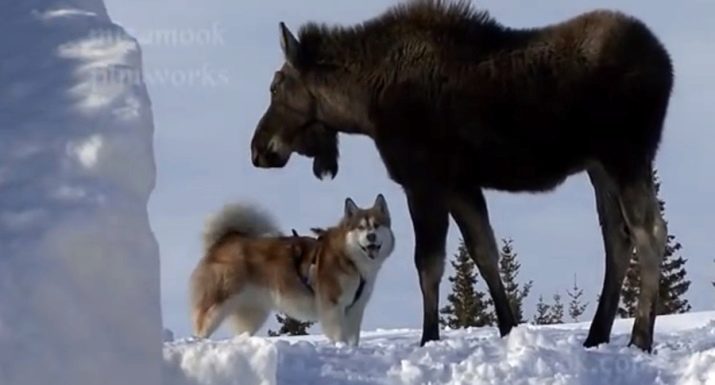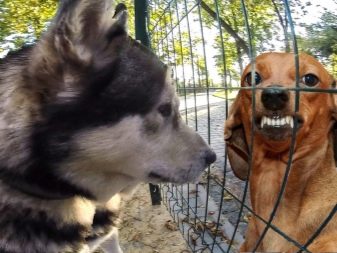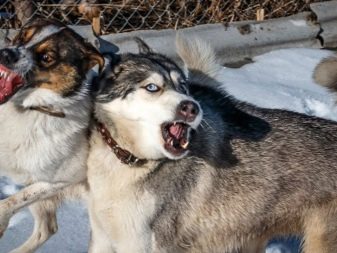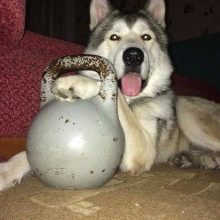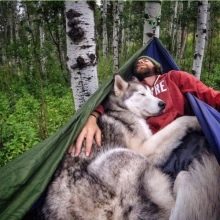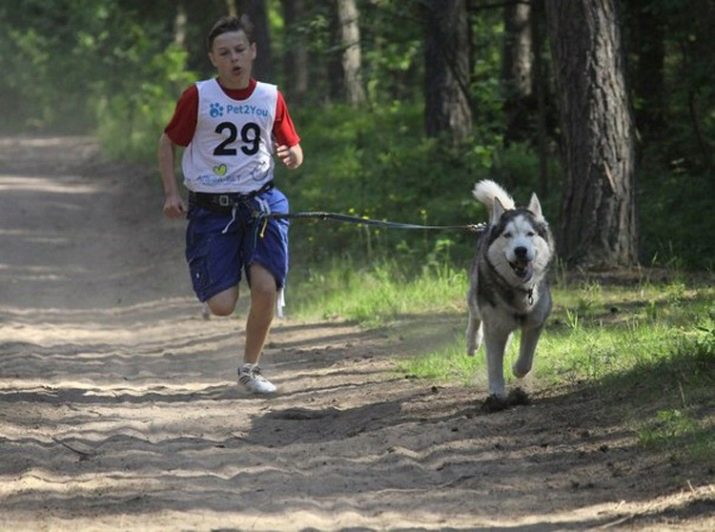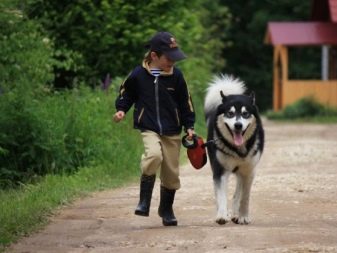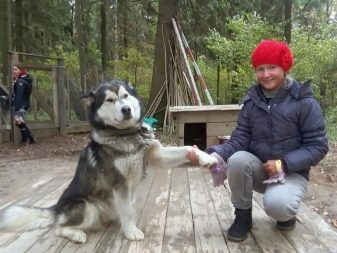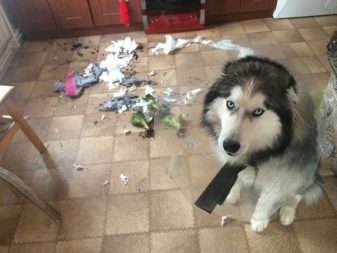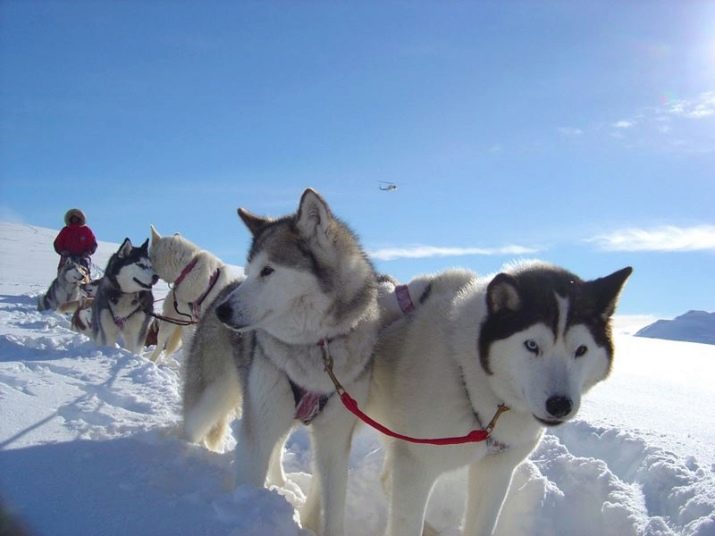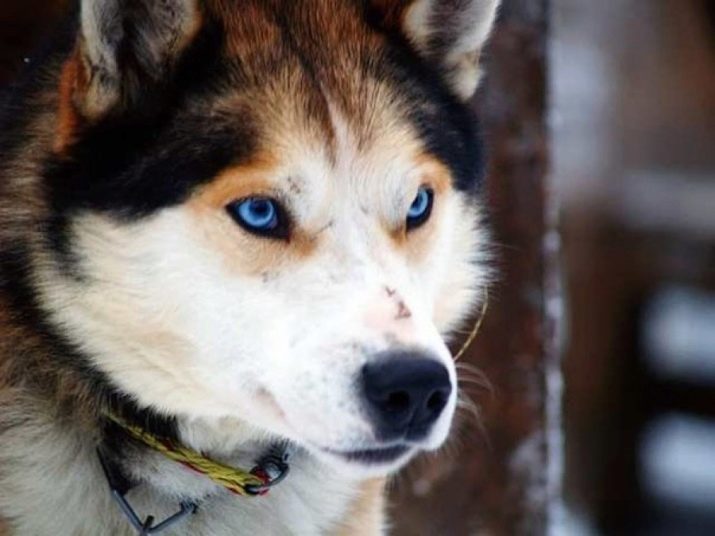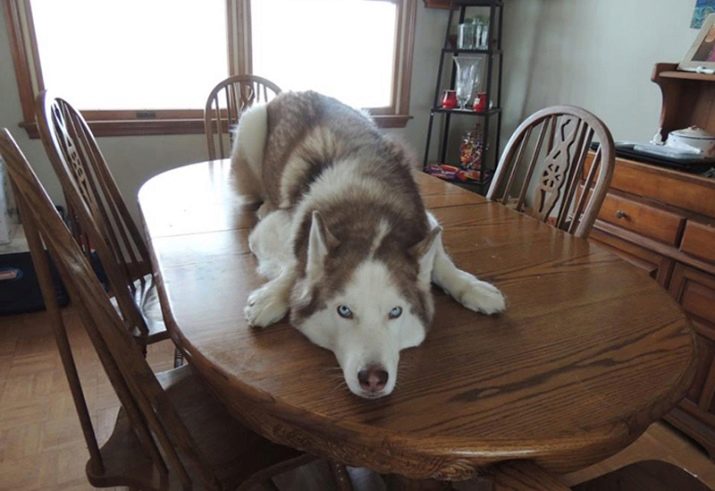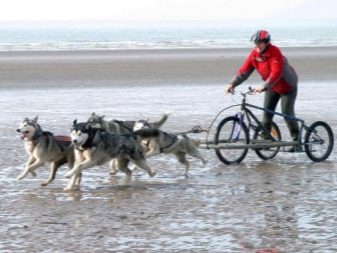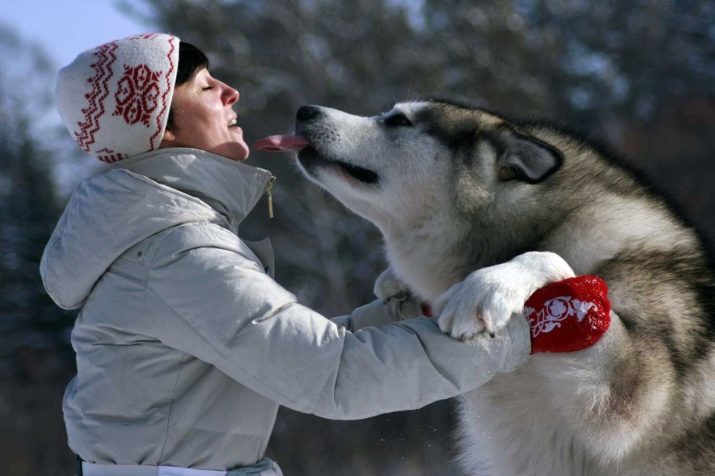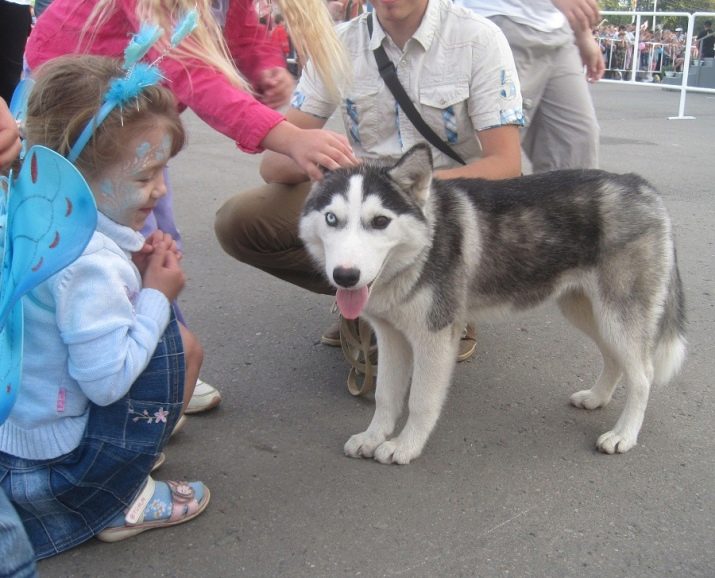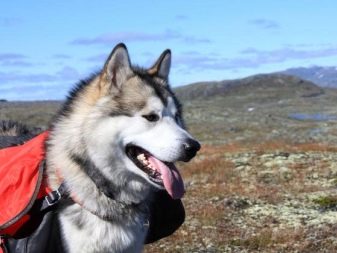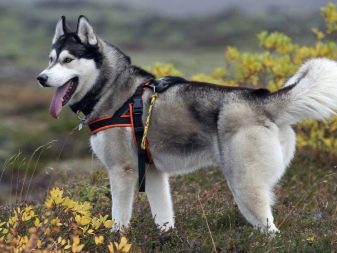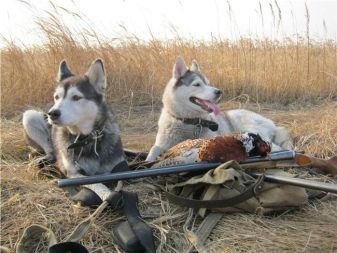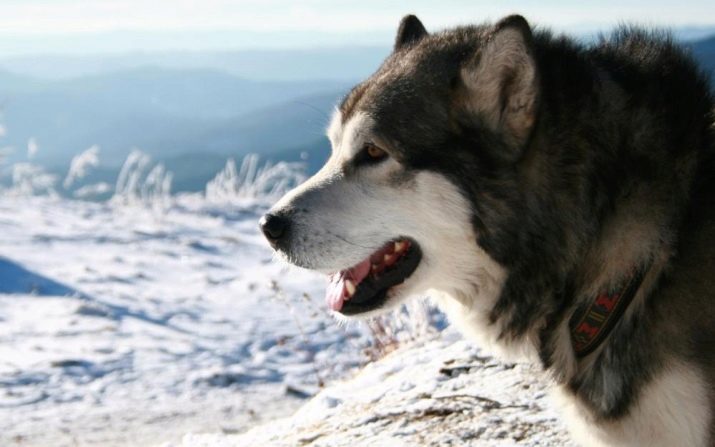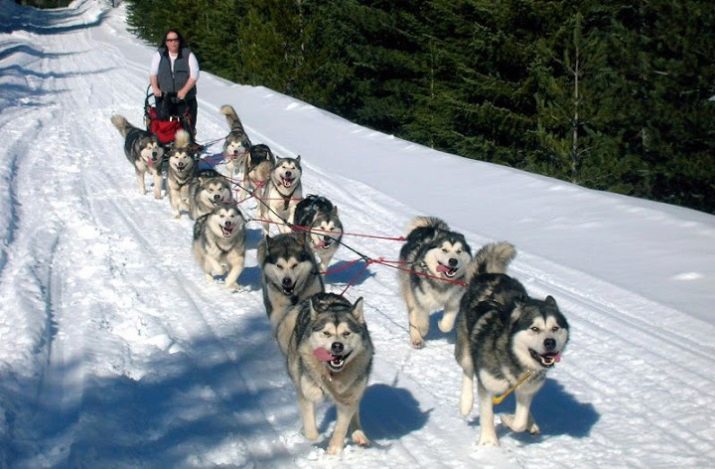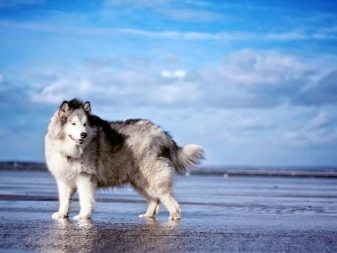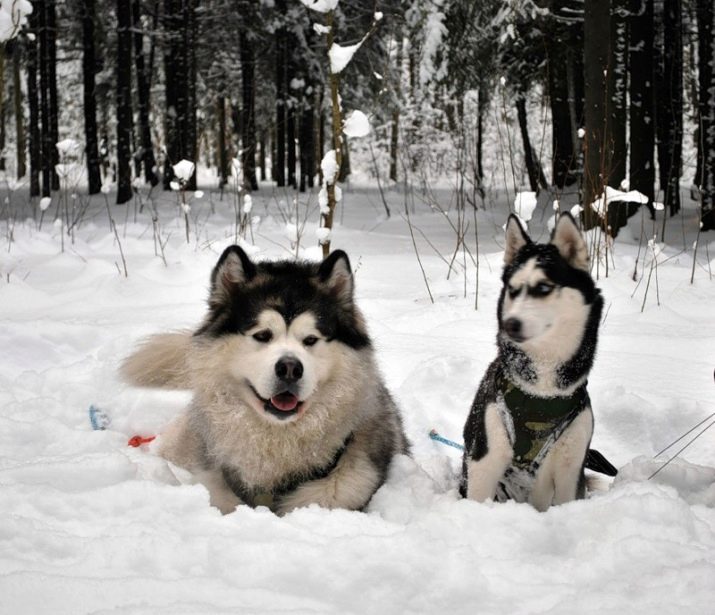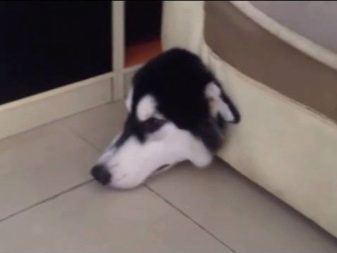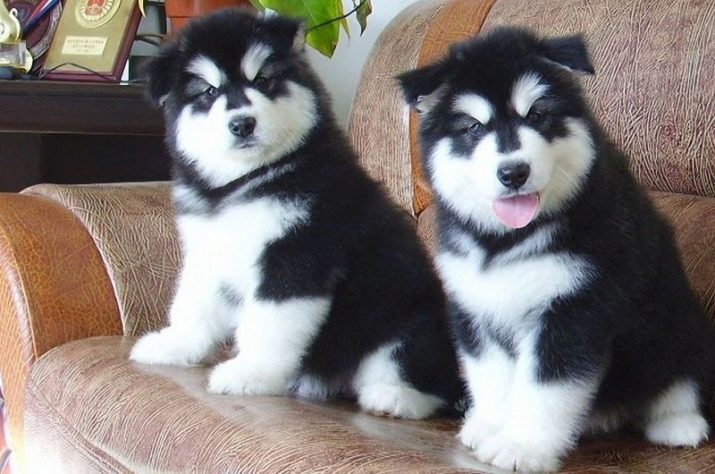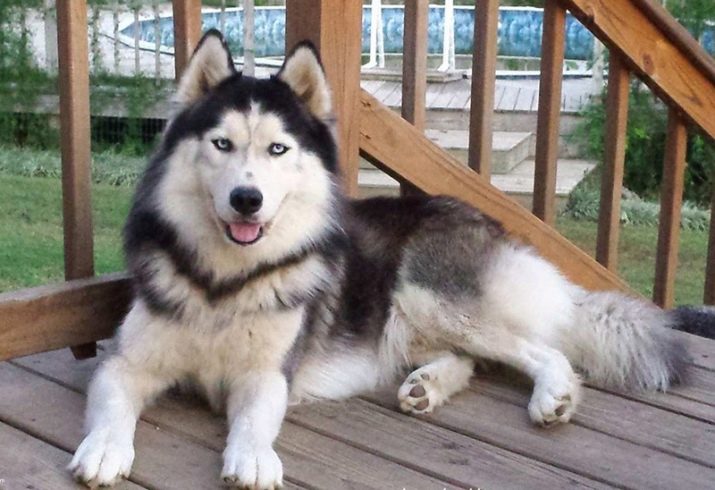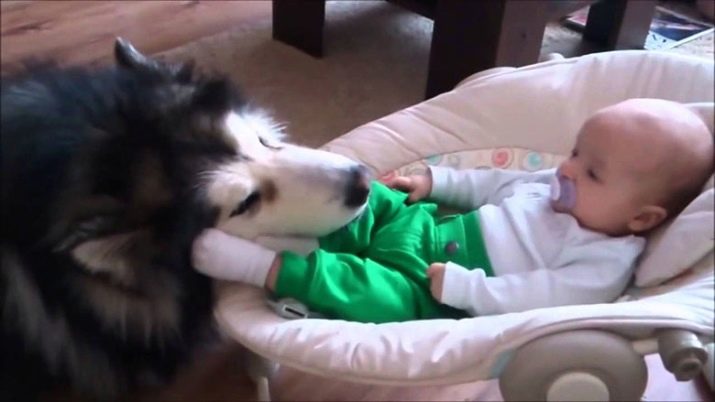Malamutes and Huskies are loyal good-natured dogs, good friends and helpers of people. Outwardly, only a quick glance may seem that they are similar.
Both breeds are ridden and bred in the north, but on different continents. They have different ancestors, so the breeds have many differences.
Malamute features
The Alaskan Malamute is a sturdy, muscular, hardy dog with a large, square-shaped body. Her height is 56–66 cm, and her weight is 32–43 kg, the difference depends on gender. The dog has a coarse long dense coat.
There are 2 breed lines: M »Loot with wolf color and Kotzebue, endowed with wool of any color: gray, black, brown, red or beige.
Malamut has a broad head with sharp ears sticking upwards, which he raises high while running. Externally, the breed is distinguished by a “mask” on the face and a “cap” on the head. The dog has muscular paws with broad pilous pillows that prevent it from falling into the snow.
The back is straight with a flexible waist, allowing the body to spring while running. The tail is moderately twisted. Look smart and friendly, full of charm.
Willful nature and mind of a dog from birth. She will use them to her advantage, if not to be engaged in education from early childhood.
Malamute - riding dog. Of course, you can take him on the hunt: he has an excellent scent.
He will find the shot or caught game quickly, but he will not bring it to his master, he will leave it to himself. For hunting you need completely different animals.
It should be remembered that the Malamute was descended from a wolf, and although the character of the dog is good-natured, the leadership qualities and the desire to be the leader of the pack remained from his ancestors. If several dogs of different breeds live in the family, there is no doubt that the Malamute will become their leader.
A person with a weak character should not start this breed. The owner from childhood will have to explain to the dog who is the owner of the house. If you give up the slack, Malamut will be the leader.
In training, he needs an integrated approach, it is necessary to equally load the dog with physical and mental exercises. Though he is stubborn, but he will be happy that they are engaged.
The owner, who does not have the skills in raising animals, can seek help from dog handlers. The main thing - do not miss the time, using the young age of the pet to form a character.
Do not put security or protective tasks in front of the dog: this good-natured merry fellow is always happy for people and is not going to bark at them.
He is generally silent by nature. For driving competitions the dog is also not suitable. He is ready to spend the whole day on the road without getting tired, but he will not be the first to finish.
Husky Characteristic
Husky in comparison with the Malamute - the very grace, it is light and agile. Its height reaches 50–60 cm, and its weight is 16–28 kg (dimensions depend on the floor). Despite its graceful appearance, the breed was developed for active work, heavy loads, long journeys in the snow.
Today breeders are guided by the beauty of the pet's appearance and its compactness for the possibility of keeping dogs in apartment conditions. But the dog, at the genetic level suitable for hard work, is difficult to refocus. If you do not give her enough daily load, she will smash the house from idleness.
The Husky is a Siberian breed derived from the small peoples of the North. But they registered it in America. Dogs received wide popularity among Europeans in the XVII-XVIII centuries during the development of the North, and among Americans - in the XIX century.During the gold rush, they were used as sled dogs.
American breeders engaged in improving the breed. Already in the 30s of the last century, a standard was developed and a population was registered. The breed returned to Russia only in the 90s of the last century.
Huskies have their own external signs.
- Wool may have a silvery shade, as well as brown, white, gray, black and white, brown. Dense warm fur allows the dog to sleep in the snow even in severe frost. The axial hair is of medium length, the undercoat is thick and soft.
- The body of the dog is proportional, compact.
- Paws straight, medium size.
- Beautiful head with a slightly elongated muzzle.
- Strong neck with a good bend.
- Amazing clever almond-shaped eyes. Most often, huskies can be met with blue eyes, but there are also brown ones. Heterochromia (iris of different color) is often observed in representatives of this breed.
- High set ears look like 2 triangles.
- The nose is most commonly found in black, sometimes brown. In dogs with a light color, you can see a beige nose.
- Strong tail twisted ring.
The nature of the animal should be discussed separately. Many who wish to take the husky into the house refuse this idea when they learn about the wayward nature of the pet.
The dog is very clever, cunning and clever, and if you add stubbornness and self-will, it becomes clear why it is so difficult to train.
She will not play the “bring the ball” games, for her intellect this is an uninteresting occupation, she will find more important things for herself that the master will not like. For example, after returning from work, you can find cracked furniture, inverted flower pots, torn covers.
Husky is not a sofa dog, it should be in the fresh air for up to 8 hours a day, while it should be loaded with physical and mental exercises. The more she spends her irrepressible energy on the street, the more whole the owner’s apartment will be.
But it is worth remembering that while walking the dog can run away. However, it is able to escape from the yard, making a tunnel under the fence. In addition, the Husky not bad opens simple locks, she has enough sense to find different loopholes to break free.
At the same time the animal is very friendly. It will not catch the thief or protect the owner: the northern dogs are accustomed not to harm people. They love everyone, but they are most attached to their master.
Husky tactful, she will not impose their society. But it will not allow others to command themselves either, it makes decisions on any issue.
Husky likes to make some noise, she “sings”, even tries to imitate people with the help of her voice. If the owners are delayed, the dog may howl for a long time, which irritates the neighbors. Dogs live up to 15–16 years.
Similarities
Malamute and Husky are northern breeds of dogs that were bred for hard work, long rides in low temperatures. Performing the same tasks in the same conditions, of course, the dogs will have a certain similarity in character, ability and appearance. At first glance, their appearance seems similar, especially almond-shaped eyes and intelligent kind eyes. Both dog breeds have thick warm hair.
Representatives of both breeds are quick-witted, kind, and capricious, they can’t imagine, they are difficult to train. These animals do not attack people, but they are not particularly obedient to them. The dogs have hunting skills, in the conditions of the north they can take care of themselves, catch the game, but only for themselves, they will not bring them to the person.
Huskies and Malamutes are loving and devoted animals, they are bored of being alone and are always happy to communicate with people.
External differences
The husky appeared in Siberia, its ancestors were local northern dogs, which were used by the Chukchi for teams. The breed was registered in 1930.
Malamutes, whose ancestors were wolves, bred the Eskimos of Alaska. These dogs became so popular that in 2010 they were made a symbol of the state of Alaska.
Both breeds were intended for trips in a harness, they had to be able to overcome a huge path through the snow-covered expanses.
Huskies are very mobile, they are able to quickly cover long distances, but because of their relatively light weight they cannot carry heavy loads. Malamutes are large strong dogs, they can walk many kilometers with heavily loaded sleds. But the Malamutes are deprived of the irreducible energy of the Huskies and will slowly and gradually overcome their path. The various possibilities of working with a harness are reflected in their appearance, weight and size.
Despite some similarities, both breeds have many differences. Dogs have completely different ancestors.
It is not surprising that the appearance and character of these animals may differ even with the same tasks that are set for them
. Consider how to distinguish the representatives of these species from each other.
- Visually, one can immediately understand that the Malamut is larger: it is about 10 cm taller than another and about 10 kg harder than another. But the Huskies can eat a lot and gain extra pounds, for Malamute overeating is not noticed.
- Dogs work differently in harness, according to their appearance, you can assess the working potential. At first glance, you can see the strength and power of the Malamute, strong chunky bones, developed muscles, strong legs. It gives the impression of a beautiful athlete with his head held high. He has a lot of energy, without getting tired, he carries heavy loads over long distances. But speed is not his strong point, it refers to the advantages of the husky. The average size of the dogs of this breed, their mobility and lightness allows them to develop a great speed in the harness. They overcome long distances, but are not able to carry too heavy loads.
- The wool in both breeds is quite warm, the dogs do not freeze even in the most severe frosts, but the difference in fur can be seen visually and tactilely. Malamute has spiny hair coarse, hard, sticking to the sides. The color of the coat can be from light gray to black, from beige to brown, but the coat on the stomach remains white. Husky fur is adjacent to the body, the undercoat is very soft, and the spinous hair is also not endowed with particular rigidity. To the touch Siberian wool is more pleasant. Any color from white to dark is allowed.
- The head of the Malamute is commensurate with the body, large, thoroughly planted. In husky it is smaller, sleeker, muzzle more elongated. Externally, the Malamute looks very good-natured, which corresponds to his character. Huskies can look different, sometimes the pattern of the mask and the cold shade of blue irises framed by the black line around the eyes make the expression of the muzzle angry and angry. But this is a deceptive impression. A kind loving playful beast is hidden under the mask.
- Malamute, in accordance with the standard, must have brown eyes, blue eyes are rare and considered to be a marriage. Huskies can have any shade, but blue is considered the most advantageous.
- Alaskan triangular, high-set ears have rounded edges, and Siberians have corners sticking up.
- The tails of both dogs fluffy, raised up with a slight bend. The Malamute has longer tail hair, during the stand it is folded over its back. A husky has a tail when it is standing.
Difference in character and behavior
Despite the fact that both dogs are riding, there are many differences in their character and habits. Husky fast, easy, energetic and "talkative" dog. Malamut is also full of energy and strength, but inferior in speed to the Siberian. He imposing, sedate, likes to shut up.
Husky cunning, playful, his mind. They love to dig the ground, make digging and other leprosy.
Malamutes are calm, but stubborn and independent, submission to someone is considered below their dignity.
Both breeds get along well with other pets, but have their own claims against them.
Huskies can run around the cats, pretending to hunt, and the Malamute will prove to everyone that he is the leader of the pack.
Who better to make?
First, we define who should not start dogs of these breeds.
- For those who have a weak character or take a pet to the family for the first time, such breeds are not suitable. They are brought up and trained very difficult. A newcomer will most likely not cope, and in the future, instead of a devoted friend, he will get a problem.
- Sled dogs should not be taken lazy, as well as busy or irresponsible people. With pets you will have to walk for 8 hours a day, loading with mental and physical training.
- These dogs are not suitable for living in an apartment. First, they will create a mess, and secondly, they need to stay a lot of time in the fresh air.
- You can not take Malamutes and Huskies for protection or protection. They will be gentle with everyone and will not harm even thieves.
These breeds are suitable for people living in private homes, where dogs have the opportunity to spend a lot of time in the yard. They can be kept in enclosures subject to walking and training.
Families with children should choose Huskies: they are smaller, easier to train and love to play with the kids. Malamute fit lonely person. He is attached to the same owner, and, although he is friendly with everyone, the nurse for children will not be for sure.
The cost of puppies can play a role in choosing a pet: Huskies are estimated at 15 thousand rubles, and Malamute - at 20. If the dogs are taken for their intended purpose: into a team, everyone decides for himself whether he needs a runner or a heavyweight. Dogs of both breeds are beautiful, kind and very fond of people. But their content is associated with certain difficulties, if you are not ready for them, it is better not to take puppies.
The difference in the character of the Malamute and Husky can be found in the video.
